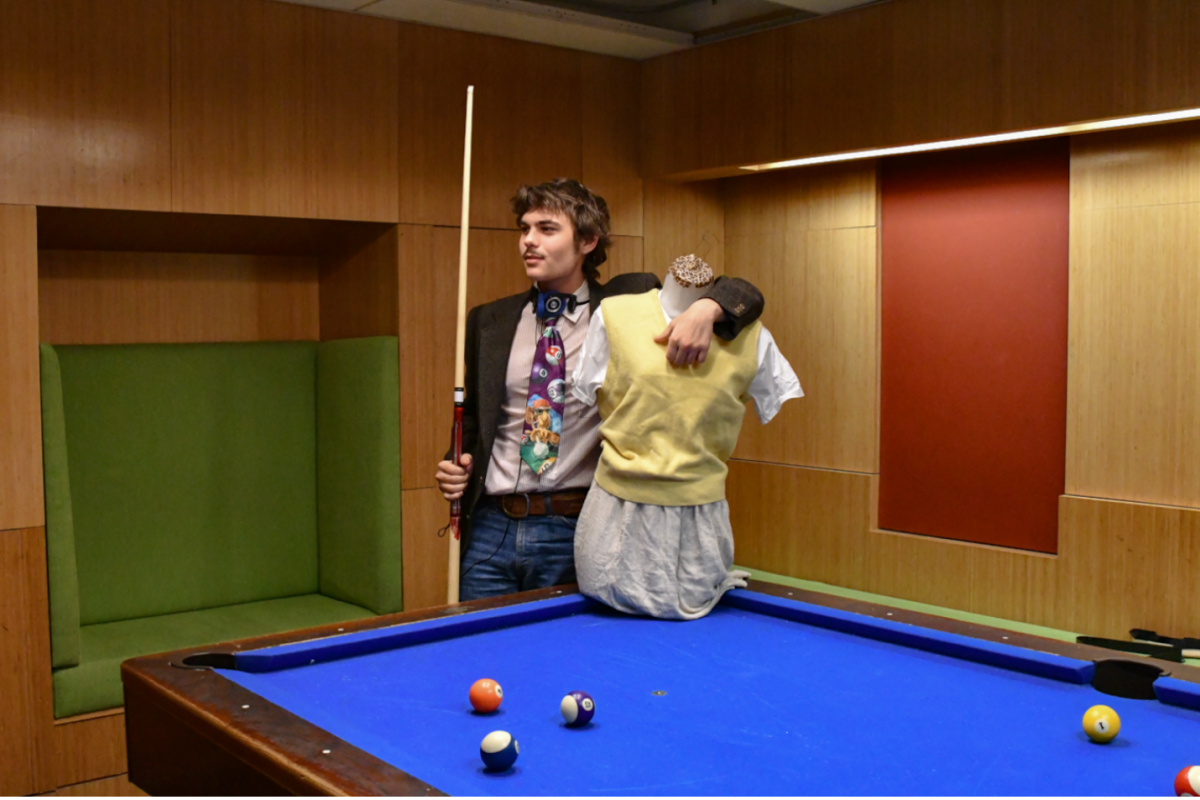Editor’s note: This is part of the Daily Collegian’s St. Patrick’s Day special issue.
It’s a simple question, but one that’s been bothering me for years now. These days, most people seem to see it as Irish Day, an excuse to go out and get drunk in public. With hoards of people sporting shiny green beads and “kiss me, I’m Irish” buttons, it’s become less of a cultural holiday and more of an emerald-tinted Mardi Gras. But what is at the core of this annual celebration, and what’s it all about? What is the true meaning of St. Patrick’s Day?
Those of you with Irish backgrounds know that the holiday represents the feast of St. Patrick of Ireland, the patron saint of the Emerald Isle. The man himself was a British noble who, as a child, was kidnapped by bandits and taken as a slave to herd sheep in the fields of Ireland. He eventually escaped and returned home, but developed a deep love both for Ireland and for the Christian faith. In 432, Patrick returned to the island as a bishop and, as the legend goes, drove out a plague of snakes and converted the pagan nation to Christianity.
There you have it: the meaning of St. Patrick’s Day.
But that’s not really what it’s about, now is it?
Hardly a soul in these parts is unaware of what this day has become. It isn’t snakes or sheep that define the sacred feast, and it sure as hell isn’t Christianity. Those who christened this holiday would scarcely recognize what it’s become because, like good St. Patrick himself, it isn’t really Irish.
Now let me set my story straight. I’ve been in Ireland on March 17, and I can tell you firsthand that the folks in Eire do it up right. They’re proud and lively people. They eat and drink, march in parades, throw festivals and generally celebrate the way you’d expect. This hasn’t always been the case, though. Sure, Patrick had his own day, but so did plenty of other saints. For hundreds of years it was a minor religious feast, and didn’t bear the fanfare and nationalism of today.
Before the age of colonialism, being Irish wasn’t as big of a deal on the island because there was no real alternative. It was only when the Celts started moving elsewhere that the need arose to formally celebrating their Irish-ness. As the new world opened up, Irish expatriates in America seized upon the holy day as a rallying point for their proud heritage and native culture. As the Irish population grew in major cities such as Boston, Philadelphia, New York and Chicago, so grew the holiday’s fame.
That was the beginning of the St. Paddy’s Day that we now know and love. People of Celtic descent around the world gather together today at pubs and parade grounds to celebrate the culture of their ancestral home.
Irish culture, after all, isn’t just about drinking. It’s about community, tradition, literature and music. Public Houses, or “pubs,” have long been important, as they serve as cultural, political and artistic meeting places. Pubs are watering holes for neighbors and community members to gather together to drink, trade stories and play music. That tradition has been carried forward by their descendants in the U.S. and so, like the day itself, the pub tradition is both Irish and Irish-American.
That brings me to the point of beer. At some point today, you may feel the sudden urge to down a pitcher or green-dyed swill from Milwaukee or Boulder. Just take a deep breath, and the feeling will pass. It isn’t Irish, and more importantly, it isn’t any good.
The national drink of Ireland is Guinness, but if you’re not into stout, there are other options. Red ale is a great Irish style, with Smithwick’s being the best-selling brand across the pond (Killian’s, in case you’re wondering, is made by Coors). Personally, I don’t see anything wrong with celebrating Irish-American drinking culture by having a few Massachusetts-made beers. There’s plenty to choose from, and the intent remains intact.
So what is St. Patrick’s Day really about? It’s about culture. It’s about Ireland and its children across the globe. It’s the Celtic people’s celebration of who they are, where they come from, and where they are now.
If you want to celebrate that culture, then you’re better of ditching the stereotypes. Sure, you can eat some white pudding, drink some black Guinness, and sport the green of the emerald shores, but throw off the beads and go back to the pub essentials: sharing good beer and solidarity with friends and neighbors.
If those neighbors happen to be a surging sea of rowdy parade-goers, then that’s fantastic. And if their roots aren’t green, don’t worry. As the old saying goes, “if you’re not Irish, that isn’t your fault.”
Andrew can be reached at Andrew.P.Sheridan@gmail .com. He misses UMass every single day.


















